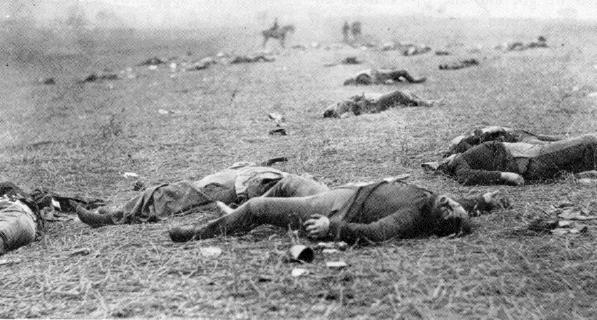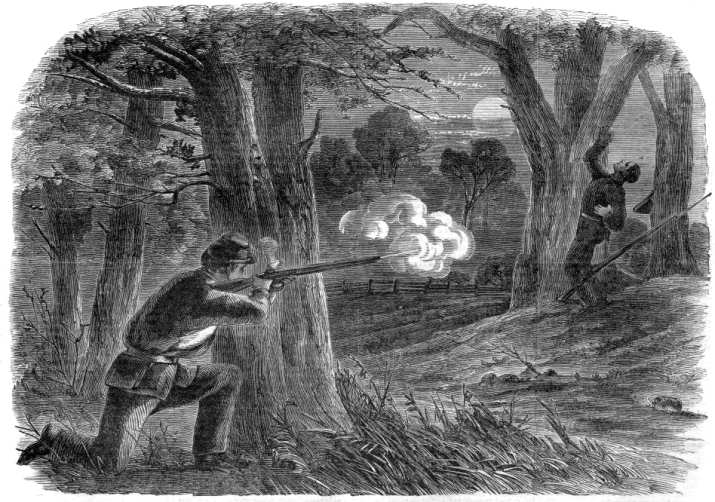 On the left is a picture of an old battlefield. These are some of the few poor people who were killed by the outbreak of war. The battlefields were merciless places to be, and thousands of people died. In addition to the dead, there were hundreds of thousands that were wounded. I n the battle that the 20th Maine Regiment fought in, it was just as harsh, many people died.
On the left is a picture of an old battlefield. These are some of the few poor people who were killed by the outbreak of war. The battlefields were merciless places to be, and thousands of people died. In addition to the dead, there were hundreds of thousands that were wounded. I n the battle that the 20th Maine Regiment fought in, it was just as harsh, many people died.
To the left is a picture of a very successful military tactic. People often hid behind trees so that they could shoot, but the opponent would not see them, so they would be safer. This is the technique that the Northerners used in all the battles at Gettysburg.

On the left is a picture of Little Round Top, where the battle was fought. Part of why the Confederates lost this battle was because of positioning. They had to walk up a hill with Union guns shooting at them, that would not be a very fun walk. Many soldiers died, just because they were going at the situation from the completely wrong way. If the twentieth Maine had not been there, they could have snuck up behind the Unions and ambushed them from behind.
Underneath is an image of Joshua Lawrence Chamberlain, who was the man who led the Twentieth Maine Regiment into battle. He is wearing the brigadier general's star that he won for his services.
 ARTISTS STATEMENT
ARTISTS STATEMENT I drew a dodgeball to show that many young boys thought that war would be a fun game, but then I put a pistol to show that it was not. In the background is Little Round Top hill. It has an unmarked grave on top. Meanwhile, Confedrate hands attempt to tear down the Unioin flag, they can't. The phrase, "Close but no cigar" Means that the Confederates were close to capturing the hill, but could not.
-Andrew Wheeler
Chamberlain's charge was a very important part of the Battle of Gettysburg. It was when Chamberlain ordered a bayonet charge, after his regiment ran out of ammunition. The quilt peice represents how the Union had controlof the hill, abd the Confederates were so close to taking it from them. There is an old saying, "Close, but no cigar" means the Confederates were really close to taking the hill
-Andrew Wheeler
Chamberlain's charge was a very important part of the Battle of Gettysburg. It was when Chamberlain ordered a bayonet charge, after his regiment ran out of ammunition. The quilt peice represents how the Union had controlof the hill, abd the Confederates were so close to taking it from them. There is an old saying, "Close, but no cigar" means the Confederates were really close to taking the hill

No comments:
Post a Comment